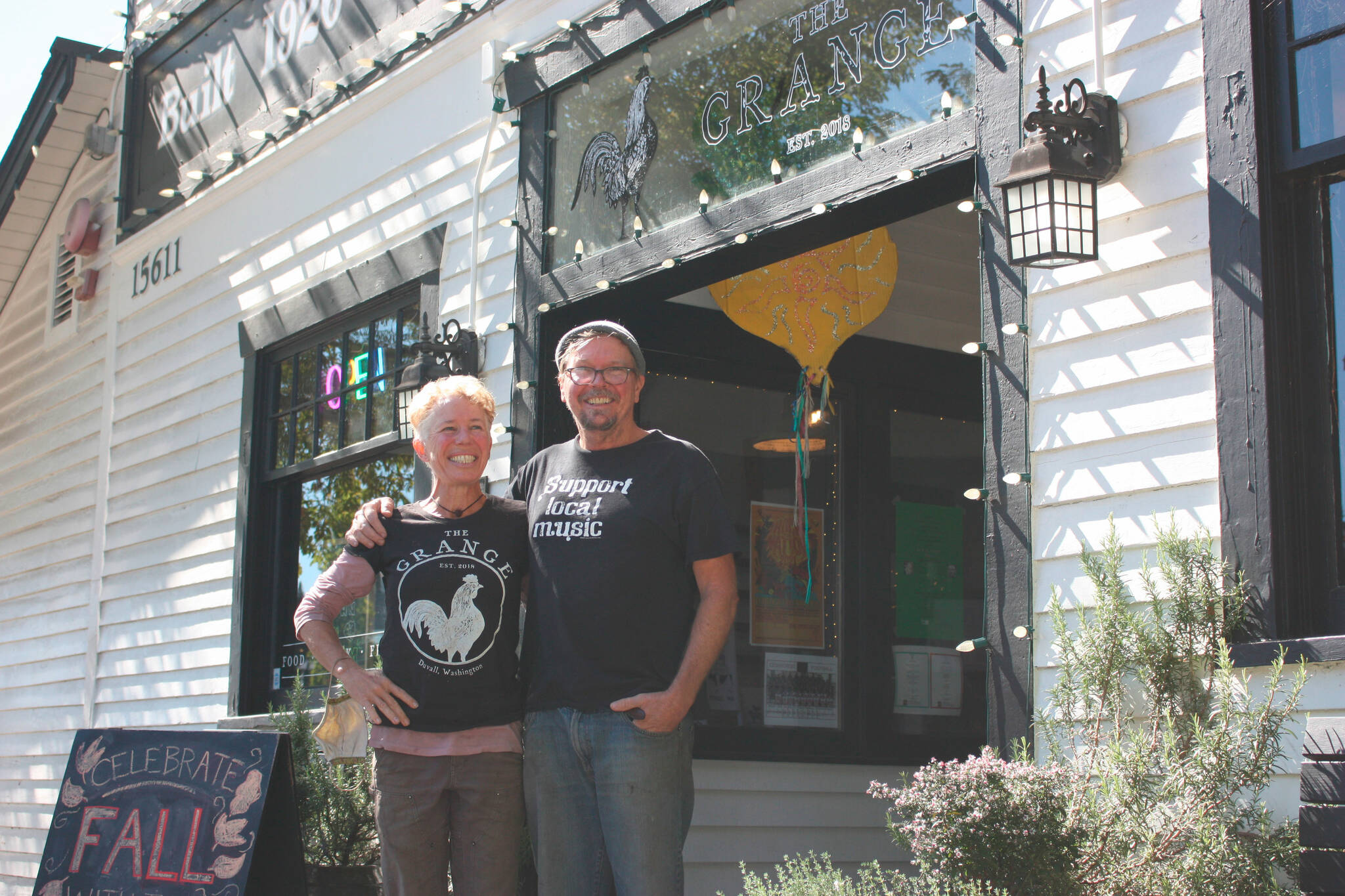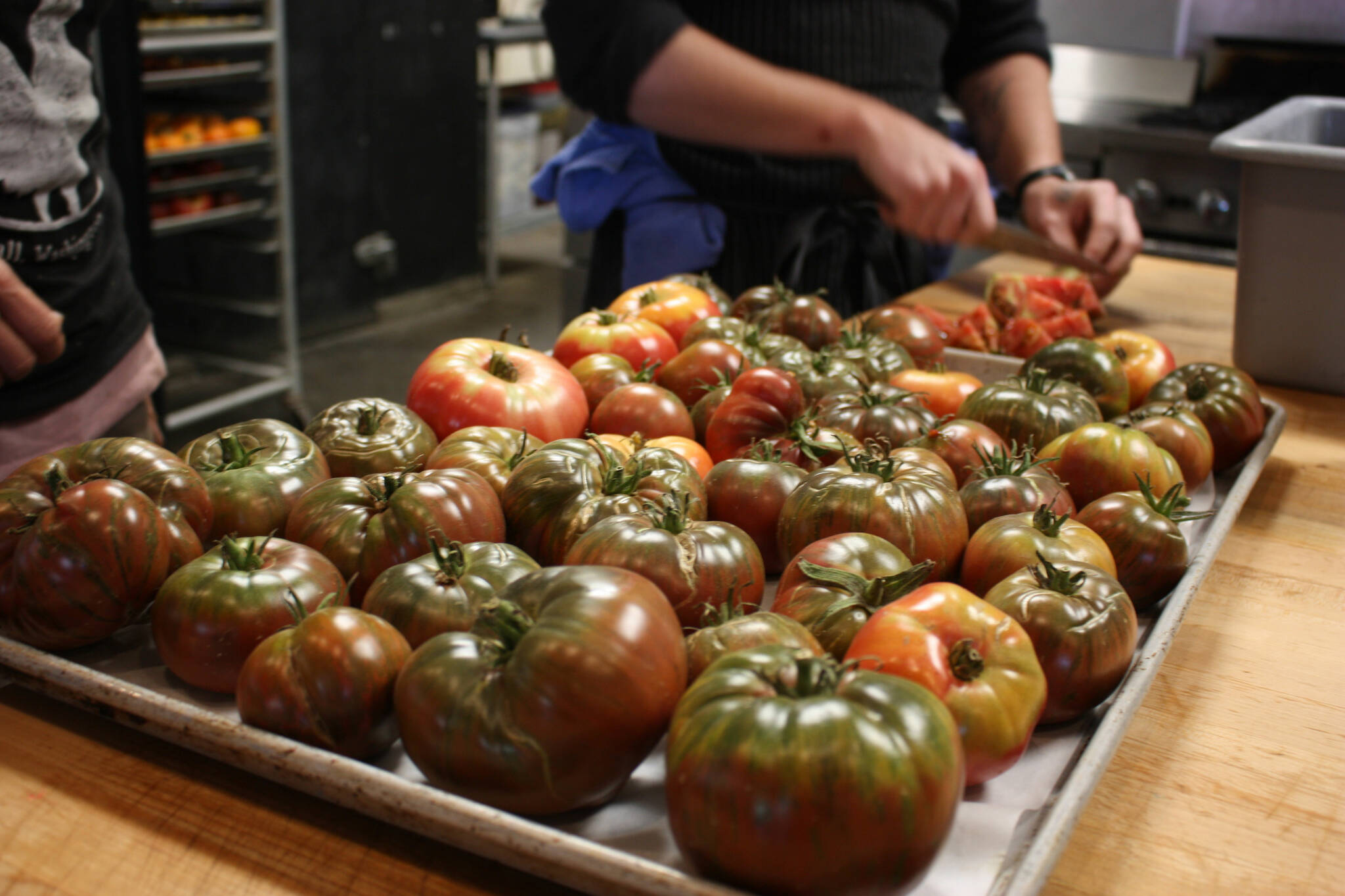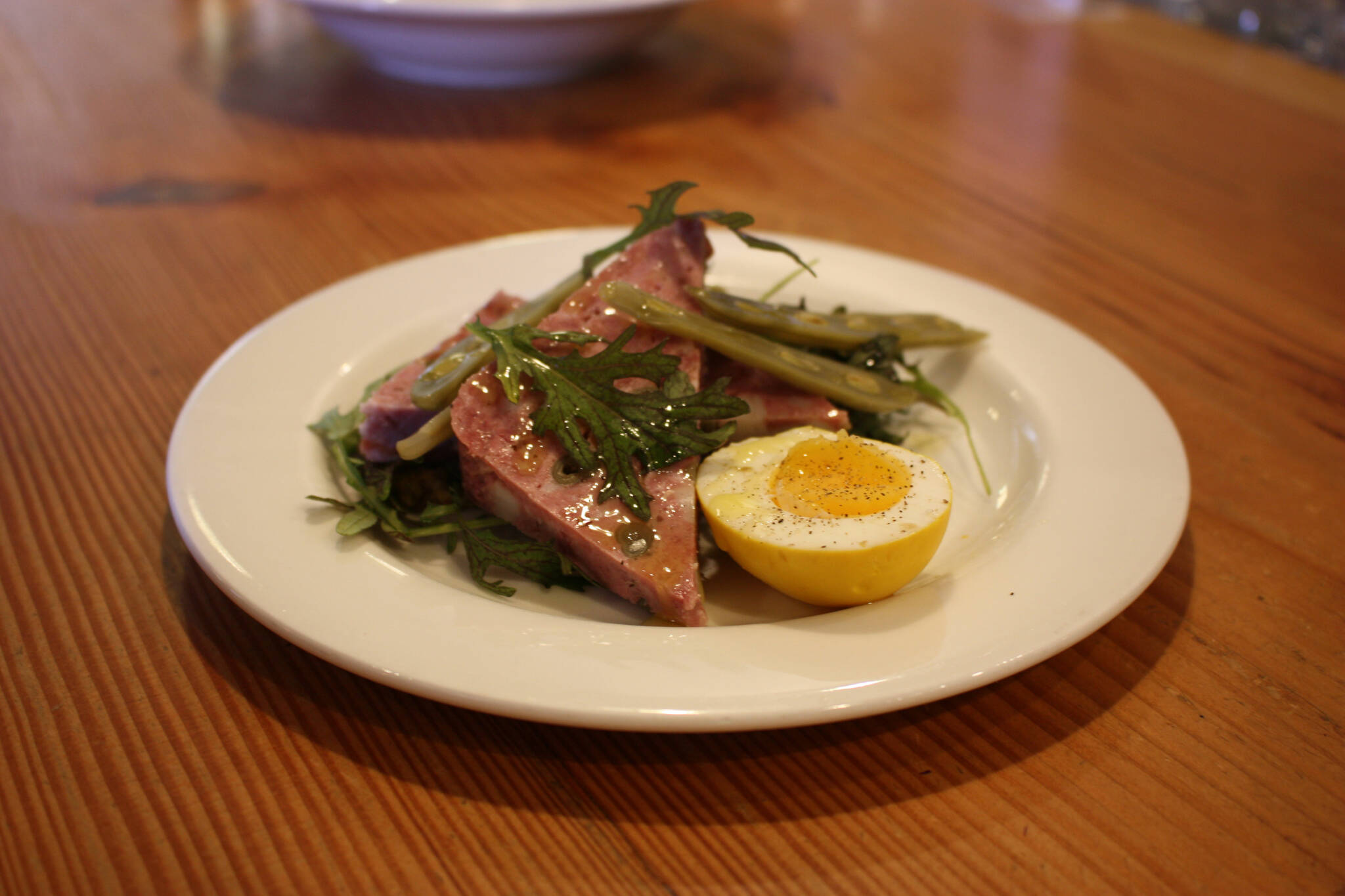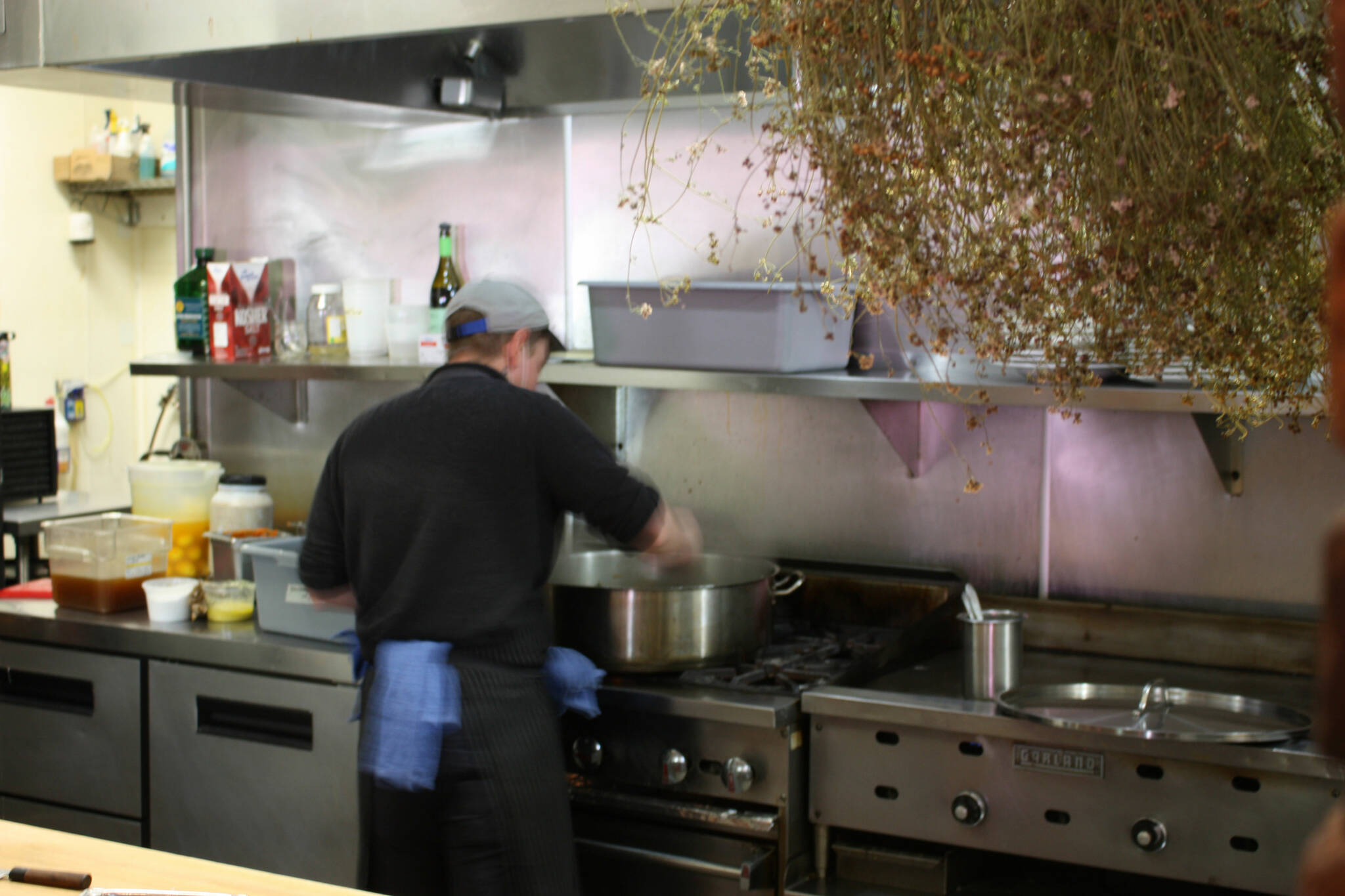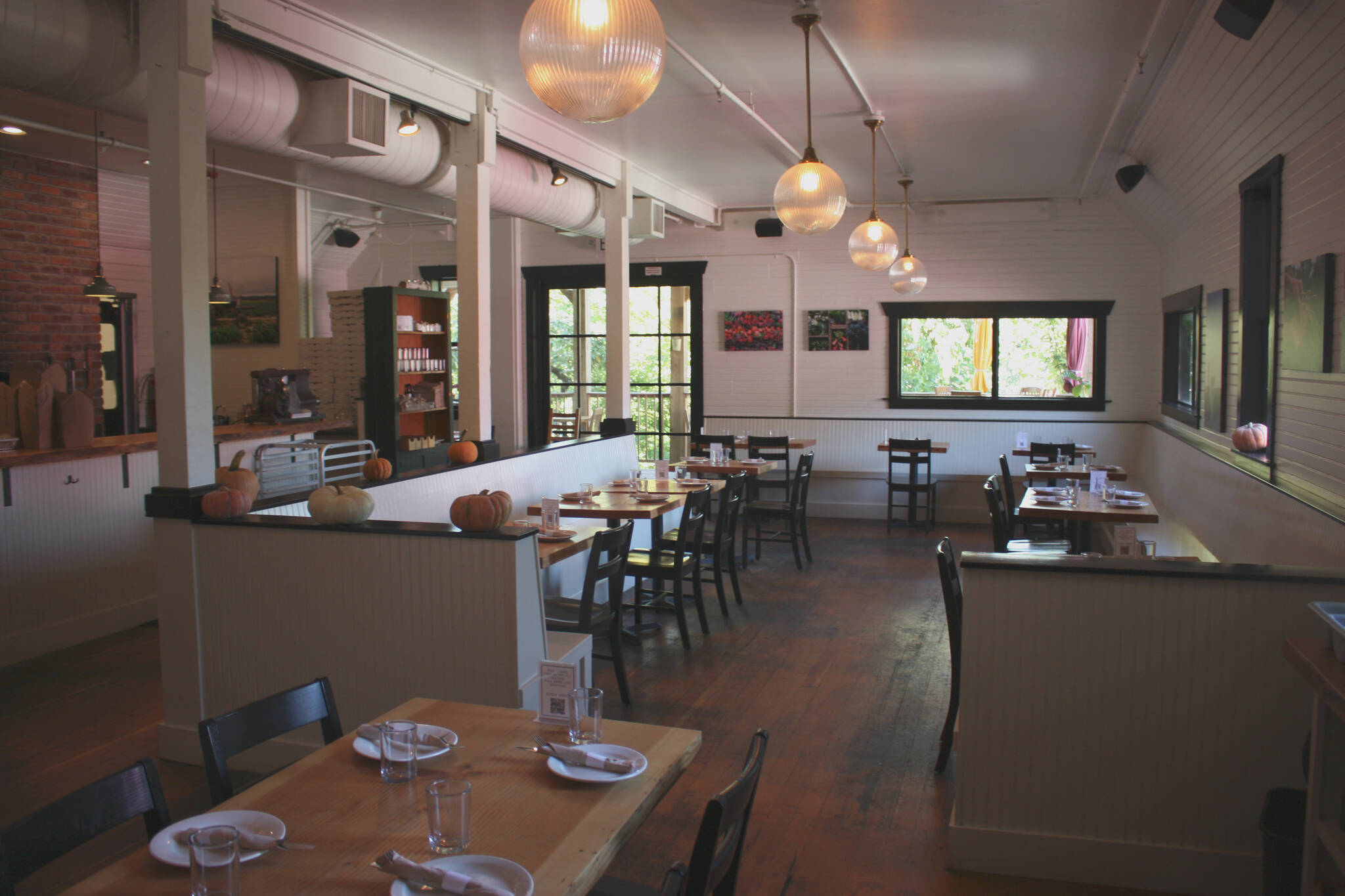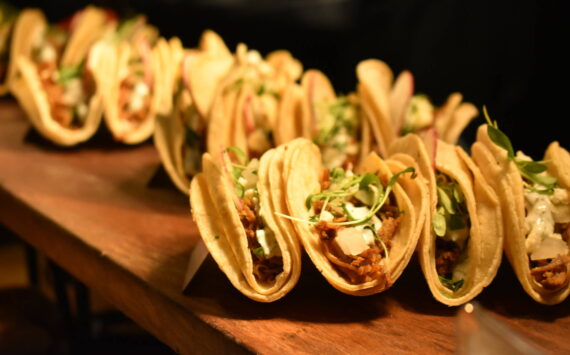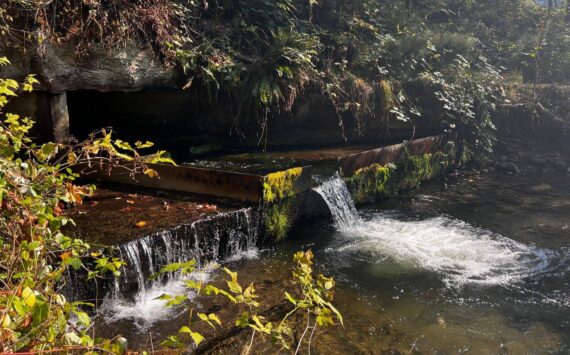The idea of farm-to-table is probably not unfamiliar to Seattle-area foodies and restaurant-goers. The trendy term is used to describe many restaurants that advertise the utilization of fresh harvests from local farms in their menus and dishes.
Sure, it is an easy trend to claim to be a part of. Virtually all food comes from farms, so isn’t all food farm-to-table?
But some establishments like The Grange in Duvall are taking the concept to heart and are redesigning a circular farm-to-table system that aims to utilize local harvests from the Snoqualmie Valley and build partnerships with local farmers, butchers, craftsmen and artists — all while building a sustainable food system around themselves.
The Grange in Duvall is symbolic, in many ways, of being a hub for the community. The building itself used to be an actual grange building, which served as a place for farmers who tended to crops and livestock in the surrounding valley to share ideas, organize and enjoy each other’s company.
The building serves a similar purpose now, but with a different clientele in a changing community as both a restaurant and a market.
Co-owners Luke Woodward and Sarah Cassidy opened The Grange about three years ago. The two had previously worked on a non-profit farm in Carnation called Oxbow Farm and Conservation Center. There, they focused on researching and practicing regenerative and sustainable agriculture practices.
Before working at Oxbow, the two had served in the Peace Corps together, where they had seen environmental degradation in Senegal and its human impacts.
“They don’t waste food there,” Cassidy said. “They can’t afford to.”
At Oxbow, they learned and gained an appreciation for sustainable farming, agriculture’s relationship to food systems and the way they have a direct impact on the natural environment.
The understanding of the cyclical relationship between the natural environment, the way people utilize energy, resources and the land to produce food, as well as the way people enjoy food — both culturally and as a necessary means of sustaining a community — all played a part in the vision for The Grange.
Cassidy and Woodard now own Hearth Farm, a three-acre farm only a few miles away from The Grange with other spaces across the Valley to take advantage of the unique micro-climates that support the prosperous growth of specific fruits and vegetables.
Along with raising hogs, Hearth Farm grows a plethora of familiar and unique greens, beans, squash, peppers, heirloom tomatoes, carrots, apples, pears and other produce that folks may have never heard of, let alone eaten.
Cassidy pulled out a container full of berry-like “mouse melons,” a vegetable she said tastes like tiny tart cucumbers. They were being pickled in a brine for use at The Grange.
According to Cassidy, who often manages and had worked at the farm before they hired a man named Jed to help tend to the crops, said about 95% of the crops grown at Hearth Farm end up on the plates of guests at The Grange.
The business has local partners like cheese makers, mushroom farmers and butchers in the Valley to get other ingredients not grown on their farm.
The menu at The Grange, outside of a few staple dishes, is constantly changing based on what is harvested from Hearth Farm. When Cassidy needs something like radicchio for the evening’s dinner service, she drives a few miles down the road and harvests it from the very earth of the Valley.
During the midday preparation for the evening dinner service, Cassidy pulled out a tray full of heirloom tomatoes. Each one was different than the other in shape and color, demonstrating an organic uniqueness.
Having freshly harvested produce only gets a restaurant so far, which is why they have Chef Kyle Bopes, whom Woodward said has worked and learned under James Beard Award-winning chef Matt Dillon.
Cassidy said some chefs are “seafood chefs,” and some chefs are “pasta chefs,” while Bopes is a “veggie chef.”
Bopes prepared a dish that in many ways symbolizes many of the principles of The Grange and its relationship with Hearth Farms: the Pork Country Terrine.
A terrine is a French dish, similar to a paté. In this case, it was made of leftover pork scraps from the preparation of another dish. Instead of throwing the scraps out, they are pressed into a loaf that is chilled and cut into slices. The slice is laid over a bed of greens and coarse mustard with some pickled green beans and a beautifully golden turmeric-pickled egg with a remarkably jammy yolk.
It’s a seemingly simple dish, which relies on simple ingredients from the surrounding Valley. It utilizes culinary techniques that are largely rooted in traditional farmhouse techniques that aim to preserve and reduce food waste.
The utilization of pickling, which The Grange relies on heavily along with dehydration, is a traditional technique that has long been used by farming families as a way of preserving produce past the season in which it was harvested.
“If you don’t preserve it, once winter comes, all you will have is radishes and daikons,” said Bopes.
Modern foodies may not be familiar with traditions and lifestyle that pickling was adopted from in rural America, but the practice has found a fond place within modern culinary culture.
The Grange also makes good use of the brick pizza oven installed by previous owners. Cassidy said pizza is a “beautiful platform to showcase produce,” and is also a versatile dish to be able to utilize whatever ingredients are at hand.
Reducing food waste within the restaurant is a large focus for Cassidy and Woodward. Because they see their food grow from just seeds, and they understand the time, energy and resources needed to just put food on the table, they are repulsed at the idea of wasting it.
“We waste as little as possible,” Woodward said. “Most everything ends up on a plate.”
Cassidy said they had recently earned a $10,000 grant to implement a worm-composting system, which would utilize whatever food scraps they generated from the restaurant and recycle its nutrients into healthier soil to be used at the farm.
“It’s a closed loop,” Woodward said of the food system they have built around themselves.
Just like the owners and uses for The Grange’s building, the town of Duvall and the surrounding Valley have changed over the years.
Woodward said the Valley used to be inhabited by many farmers and loggers. Now, it is still a farming community, but the tech boom of Seattle and the Eastside is spilling over.
Housing projects are being erected near the outskirts of town and a surprising amount of traffic runs through the little town.
Woodward said the Valley now has artists and musicians, tech folks and new philosophies. He hopes The Grange can be a community hub for the region, much like it was in the Valley’s older eras.
